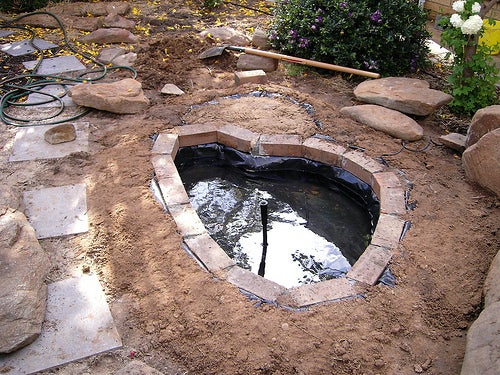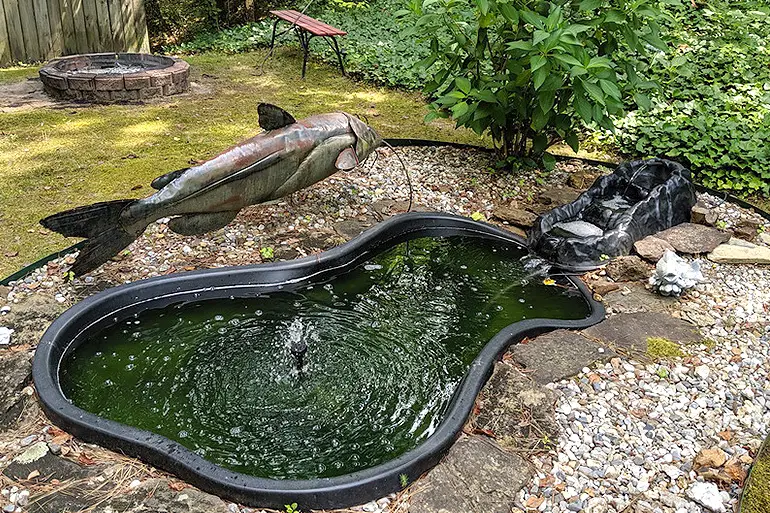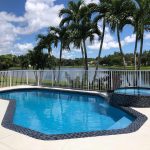Building your own fish pond can be a rewarding and enjoyable project that adds beauty and tranquility to your outdoor space. Whether you are a seasoned DIY enthusiast or a beginner looking for a new challenge, creating a fish pond is a great way to enhance your garden and create a peaceful retreat right in your own backyard.
1. Planning and Design
The first step in building your own fish pond is to carefully plan and design the layout and size of your pond. Consider the available space in your yard, the type of fish you want to keep, and the overall aesthetic you wish to achieve. You can choose from various pond shapes such as round, oval, or kidney-shaped, and determine the depth based on the fish species you plan to keep.
It’s important to consider the location of the pond in relation to trees and other plants, as falling leaves and debris can affect water quality. Additionally, ensure that the pond is not positioned in a low-lying area where runoff water can accumulate.

Credit: www.instructables.com
2. Digging the Pond
Once you have finalized the design, it’s time to start digging. Use a garden hose or spray paint to mark the outline of the pond on the ground. Begin by excavating the area, making sure to create shelves or ledges at varying depths to accommodate different types of aquatic plants and provide areas for fish to hide and seek shelter.
Consider renting a small excavator or hiring a professional if the pond is large, as digging by hand can be labor-intensive and time-consuming. Take care to create a gradual slope from the edge to the deepest part of the pond to prevent erosion and provide easy access for maintenance.
3. Installing the Pond Liner
After the excavation is complete, the next step is to install the pond liner. Choose a high-quality, fish-safe liner that is durable and resistant to punctures. Lay the liner carefully in the hole, ensuring that it overlaps the edges of the pond. Smooth out any wrinkles and creases, and use rocks or bricks to hold the liner in place temporarily.
Trim any excess liner, leaving a few feet of overlap around the perimeter of the pond. This will allow for adjustments and anchoring once the filling and shaping process is complete.
4. Adding Filtration and Aeration
Proper filtration and aeration are essential for maintaining a healthy and balanced ecosystem within your fish pond. Install a reliable filtration system to remove debris and waste, and consider adding a water pump and aeration device to keep the water oxygenated.
There are various types of filtration systems available, including mechanical, biological, and UV clarifiers, each serving a specific function in maintaining water quality. Research the specific needs of your chosen fish species to determine the appropriate filtration and aeration requirements.
5. Filling and Landscaping
Once the liner is in place and the necessary equipment is installed, it’s time to fill the pond with water. Use a garden hose or consult a water delivery service to fill the pond, taking care to dechlorinate the water if using tap water. Allow the water to settle for a few days, and make any final adjustments to the liner and landscaping as needed.
Consider adding aquatic plants around the edges of the pond to provide shade, shelter, and natural filtration. Water lilies, lotus, and water hyacinths are popular choices that not only enhance the visual appeal of the pond but also contribute to the overall health of the aquatic environment.
6. Introducing Fish
With the pond fully established, it’s time to introduce fish to their new home. Research the specific requirements and behaviors of the fish species you plan to keep, and ensure that the pond is properly acclimated to support their needs. Consider starting with a small number of fish and gradually adding more over time as the pond matures.
Observe the fish regularly to ensure they are healthy and thriving, and provide appropriate food and care as needed. Remember that fish keeping is a responsibility that requires commitment and attention to maintain a thriving aquatic ecosystem.

Credit: www.homedepot.com
7. Maintenance and Care
Regular maintenance is crucial to keeping your fish pond healthy and beautiful. Establish a routine for removing debris, testing water quality, and performing necessary equipment maintenance. Monitor the water temperature, pH levels, and oxygen content to ensure optimal conditions for your fish and plants.
During the colder months, consider investing in a pond heater or de-icer to prevent the water from freezing completely. Remove excess leaves and debris to prevent the accumulation of organic matter that can lead to water quality issues.
8. Enjoying Your Pond
Once your fish pond is established and thriving, take the time to sit back, relax, and enjoy the beauty and serenity it brings to your outdoor space. Whether you choose to add a bench or a small patio near the pond, creating a tranquil seating area will allow you to fully appreciate the sights and sounds of your new aquatic oasis.
Invite friends and family to share in the experience, host a small gathering or simply spend quiet moments by the water’s edge. Your fish pond can become a focal point of relaxation and enjoyment, providing a peaceful retreat right in your own backyard.
Building your own fish pond is a fulfilling and creative endeavor that allows you to connect with nature and create a harmonious ecosystem for aquatic life. With careful planning, proper installation, and ongoing maintenance, you can enjoy the rewards of a beautiful and thriving fish pond for years to come.




